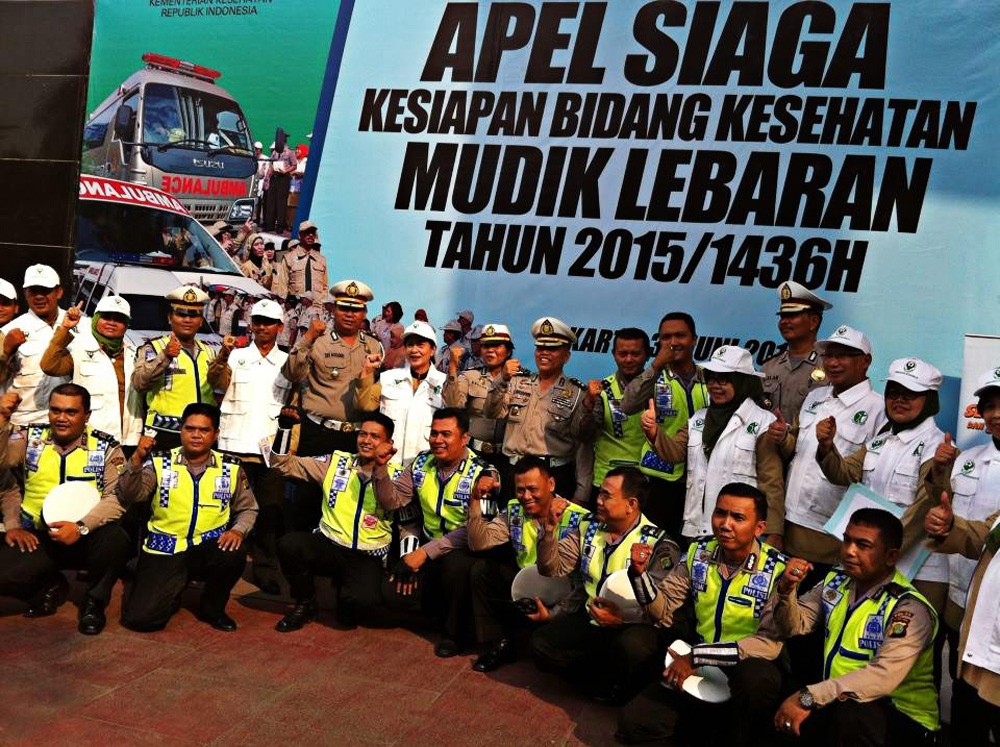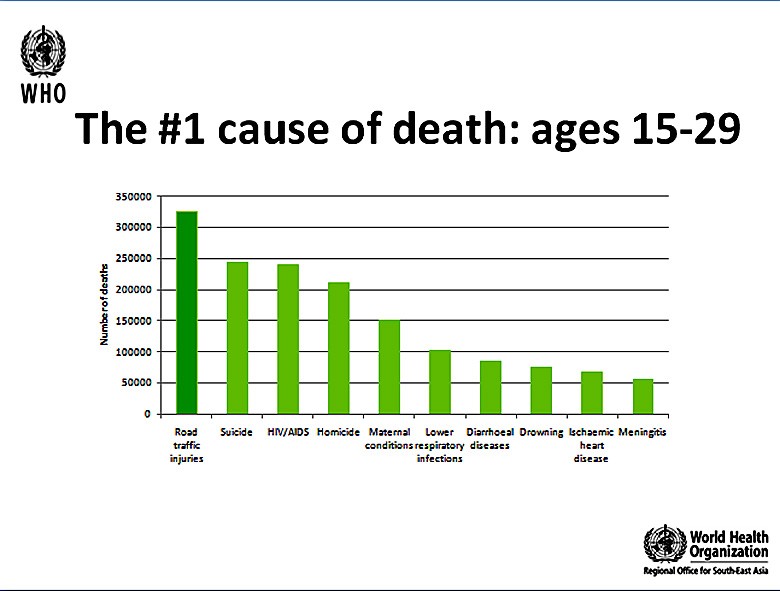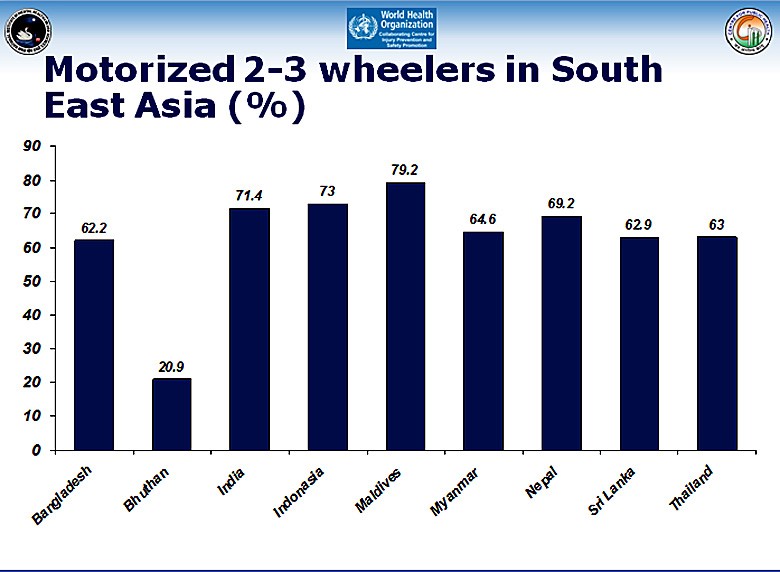As traffic death figures worsen, what can governments do?
Change Size
 Safe travel — Health Minister Nila F. Moeloek (standing, sixth left) poses for a picture with traffic personnel and health workers dispatched by the Health Ministry to ensure the safety of homebound travelers following Idul Fitri, during a ceremony at the ministry in Jakarta in June 2015. (JP/Elly Burhaini Faizal)
Safe travel — Health Minister Nila F. Moeloek (standing, sixth left) poses for a picture with traffic personnel and health workers dispatched by the Health Ministry to ensure the safety of homebound travelers following Idul Fitri, during a ceremony at the ministry in Jakarta in June 2015. (JP/Elly Burhaini Faizal)
W
hile poor nutrition, infections and communicable diseases have long been the main health issues claiming the lives of young people, road accidents have now become the major cause of death for the age group.
Data from the Health Ministry’s health crisis prevention center reveals that youth death rates from traffic accidents in Indonesia are high.
“More than half of traffic accidents here occur with people riding a two-wheeler. Most of them are a single-vehicle crash, which affects people in the age group of 22 to 25 years,” the center’s head Achmad Yurianto told The Jakarta Post in a recent interview.
With rapid growth in motorcycle usage in Indonesia, and with most users being young people, it was not strange that motorcyclists were “vulnerable” to traffic deaths among road users in the country, he explained.
(Read also: Traffic accidents remain major contributor to fatalities, health problems)
Achmad said poor discipline on the roads was one of the top factors contributing to traffic accidents, including for two-wheelers.
“They know the speed limit rules, they are aware of mandatory helmet use, they are informed well about drink-driving risks and they understand traffic signs. But we’ve seen many road accidents caused by a sudden lane change, running a red light, or other violations,” the center head said.
“The traffic culture remains poor in Indonesia. That’s a fact. There is poor awareness among motorists here that they have a common interest with other road users. Roads are provided not only for motorists. Pedestrians also use roads when they need to cross to reach an area,” he added.

In the World Health Organization’s (WHO) South-East Asian region, approximately 316,000 people die due to traffic accidents every year. In the region, the road traffic death rate stands at 17 per 100,000 people. Indonesia’s road traffic fatality rate stands at 15.3.
The WHO data further revealed that 73 percent of vehicles in Indonesia were motorized two- or three-wheelers. Meanwhile, 2010 National Police data said drivers of motorized two- or three-wheelers accounted for 36 percent of total deaths from traffic accidents, the highest compared to other road user categories.
With the need for affordable mobility continuing to increase due to traffic gridlock, creating higher consumer demand for motorcycles, youth deaths from traffic accidents in Indonesia could also continue to grow.
Every day, TV advertisements encourage people to buy cars and motorcycles, which use sophisticated technology and can move at a high speed. At the same time, finance companies are ready to provide loans for consumers to purchase vehicles.
The question is, how often do viewers see road safety advertisements on their TV screens?
Oftentimes, governments do not give equal importance to road safety and motorization. Governments have a strong economic interest in selling motorcycles, cars and other vehicles as it brings in money. However, road safety is something they should invest in.

As stated in the 2015 Road Safety in the South-East Asia Region report, 1.2 million people globally die from traffic-related injuries every year. These injuries are the leading cause of death among young people aged between 15 and 29 years, the report said.
As young people are in the most productive and healthy part of their lives, road traffic injuries have a huge impact on development. According to the WHO, this can cost governments approximately 3 percent of gross domestic product (GDP), or up to 5 percent in low- and middle-income countries.
Some countries may not have a large number of cars but death rates remain high, showing that road safety involves different perspectives.
“One vehicle can kill many people because there are also pedestrians and bicyclists on the roads. Here, governments should put more money into public transportation, infrastructure facilities and walkable cities,” said G. Gururaj, head of the epidemiology department at the WHO Collaborating Centre for Injury Prevention and Safety Promotion, during the recent Regional Journalists Workshop on Road Safety in Colombo.
“The future of our cities depends on the way we design them — how do we promote safe walking or safe cycling — no longer on the length of roads or the number of vehicles.”









